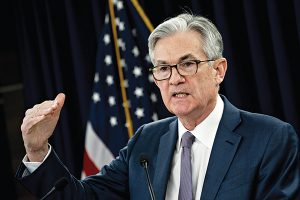Federal Reserve Chairman Jerome Powell’s speech at last week’s central banking conference in Jackson Hole, Wyoming, was brief — but financial markets took notice. The S&P 500 fell sharply as investors adjusted their thinking on how tough the Fed was willing to be to get inflation back under control.
Powell underlined that restoring price stability is the Fed’s “overarching focus†and conspicuously avoided saying that higher unemployment might impede that task. Investors saw this as a somewhat new message — and indeed it was. Yet the central bank still has work to do in explaining itself intelligibly.
Back in July, after the most recent meeting of the Fed’s policy-making committee, Powell emphasized his hope that lower inflation could be achieved alongside a “soft landing†— meaning that upward pressure on wages (and hence prices) might ease with little or no rise in unemployment. Lately the ratio of vacancies to unemployed workers has been breaking records, he said, suggesting that a slower pace of demand could reduce the number of openings without adding much to the queue of jobseekers.
Although this isn’t impossible, cooling labor-market demand has almost invariably meant higher unemployment in practice. Powell’s soft-landing ambition was therefore read as signaling reluctance to see unemployment rise as a consequence of tighter monetary policy. Powell’s Jackson Hole speech squashed that interpretation — firmly enough, by the way, for Senator Elizabeth Warren to object. If a moderate rise in unemployment is needed to get inflation down, the Fed now says, so be it.
In truth, this isn’t so much a choice as a matter of recognizing a hard reality. At 3.5% of the labor force, unemployment is currently significantly lower than its estimated “natural rate†(which neither adds to nor subtracts from inflation). A rise to between 4% and 5% is only to be expected as inflation subsides. The Fed erred in letting analysts think it ever thought otherwise.
In effect, then, Powell warned investors that interest rates could go higher and for longer than they’d previously supposed — hence the drop in share prices. With core inflation running at nearly 5% and showing signs of persisting, that warning seems well-advised.
Unfortunately, having cleared up one kind of confusion, Powell may have introduced another. In July he said that monetary policy had to be nimble. At a time of exceptional uncertainty, he explained, the Fed couldn’t tie its hands with so-called forward guidance: Future interest rates would depend on fast-changing circumstances. That was wise. But last week’s speech contained hints of a commitment to keeping rates high regardless: “Restoring price stability will likely require maintaining a restrictive policy stance for some time.â€
Doubtless Powell was simply trying to correct a misapprehension. The fact remains, the Fed can do forward guidance or it can be nimble, but not both.
—Bloomberg
 The Gulf Time Newspaper One of the finest business newspapers in the UAE brought to you by our professional writers and editors.
The Gulf Time Newspaper One of the finest business newspapers in the UAE brought to you by our professional writers and editors.
